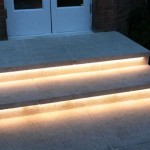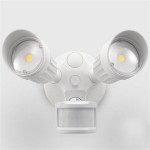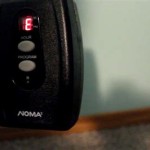The Rise of Solar Powered Outdoor Lights with Remote Sensor Technology
Outdoor lighting plays a crucial role in enhancing safety, security, and aesthetics around residential and commercial properties. Traditionally, outdoor lighting systems have relied on wired connections to the electrical grid, leading to higher energy consumption and installation costs. However, advancements in solar technology and sensor capabilities have paved the way for solar-powered outdoor lights with remote sensor technology, offering a sustainable and efficient alternative. These lights harness the power of the sun during the day to illuminate outdoor spaces at night, utilizing remote sensors to optimize performance and conserve energy.
Solar-powered outdoor lights operate through a system that converts sunlight into electricity. The primary components include a photovoltaic (PV) panel, a rechargeable battery, a light source (typically LED), and a control circuit. The PV panel absorbs sunlight and converts it into direct current (DC) electricity through the photovoltaic effect. This electricity charges the rechargeable battery during daylight hours. At dusk, the control circuit activates the light source, drawing power from the battery to illuminate the designated area. The duration for which the light remains on depends on the battery's capacity, the power consumption of the light source, and the amount of sunlight received during the day.
The integration of remote sensors further enhances the functionality and efficiency of these lighting systems. Remote sensors, often employing technologies like motion detection, light detection, or a combination thereof, allow the lights to respond intelligently to their environment. Motion sensors, for instance, can trigger the light to illuminate only when movement is detected within a certain range, conserving energy when the area is unoccupied. Light sensors, on the other hand, can automatically adjust the brightness of the light based on ambient light levels, providing optimal illumination while minimizing energy consumption during periods of partial darkness.
Key Benefits of Solar Powered Outdoor Lights with Remote Sensors
Several significant advantages contribute to the growing popularity of solar-powered outdoor lights equipped with remote sensor technology. These benefits span environmental, economic, and practical considerations.
Firstly, these lights significantly reduce energy consumption and carbon footprint. By utilizing solar energy, they eliminate the need for electricity from the grid, thereby lowering electricity bills and reducing reliance on fossil fuels. This contributes to a more sustainable and environmentally friendly approach to outdoor lighting. The reduced energy consumption also aligns with global efforts to mitigate climate change and promote energy conservation.
Secondly, installation costs are significantly lower compared to traditional wired lighting systems. Solar-powered lights do not require trenching, wiring, or the involvement of an electrician, simplifying the installation process and reducing associated labor costs. This makes them an attractive option for homeowners and businesses looking to upgrade their outdoor lighting without incurring significant upfront expenses. Furthermore, the ease of installation allows for flexible placement of the lights in areas where wiring may be impractical or costly.
Thirdly, the remote sensor technology enhances security and safety. Motion sensors can deter potential intruders by automatically illuminating the area when movement is detected, creating a visible deterrent and alerting occupants to potential threats. This increased visibility can also improve safety by illuminating pathways and reducing the risk of accidents, especially in dark or poorly lit areas. Furthermore, the remote functionality allows for customized lighting schedules and alerts, further enhancing security measures.
Types of Remote Sensor Technologies Used
The functionality of solar-powered outdoor lights with remote sensors is significantly influenced by the specific type of sensor technology employed. Different sensor technologies offer unique capabilities and are suited for different applications and environments.
Motion sensors are a common type of sensor used in these lighting systems. These sensors detect movement within a defined range and trigger the light to illuminate. They typically utilize technologies such as passive infrared (PIR) or microwave sensors. PIR sensors detect changes in infrared radiation emitted by objects in their field of view, while microwave sensors emit microwave radiation and detect changes in the reflected signal. Motion sensors are particularly effective for security lighting, as they can automatically illuminate an area when someone approaches, deterring potential intruders.
Light sensors, also known as photocells, measure the ambient light level. They automatically activate the light source when the ambient light falls below a certain threshold. This ensures that the light only operates when it is needed, conserving energy during daylight hours. Light sensors are often used in conjunction with motion sensors to further optimize energy efficiency. For example, a light might only activate when motion is detected and the ambient light level is low.
Combination sensors integrate multiple sensing capabilities into a single device. For example, a combination sensor might include both motion and light sensing capabilities. This allows for more sophisticated control of the lighting system, enabling it to respond intelligently to a variety of environmental conditions. Combination sensors can optimize energy efficiency and provide enhanced functionality compared to single-sensor systems.
Factors to Consider When Choosing Solar Powered Outdoor Lights with Remote Sensors
Selecting the appropriate solar-powered outdoor lights with remote sensors requires careful consideration of several factors to ensure optimal performance and longevity. These factors include the light’s specifications, sensor capabilities, battery performance, and environmental suitability.
The brightness of the light, measured in lumens, is a critical specification to consider. The required brightness depends on the size of the area to be illuminated and the intended purpose of the lighting. For example, pathway lighting typically requires lower lumen output than security lighting. The color temperature of the light, measured in Kelvin, also affects the overall appearance and feel of the illuminated area. Warmer color temperatures (lower Kelvin values) are generally preferred for residential settings, while cooler color temperatures (higher Kelvin values) are often used for commercial or security applications.
The range and sensitivity of the remote sensor are important considerations. The range determines the maximum distance at which the sensor can detect motion or light. The sensitivity determines how responsive the sensor is to changes in the environment. A higher sensitivity means that the sensor will detect smaller changes, while a lower sensitivity means that it will only detect larger changes. The optimal range and sensitivity depend on the specific application and the desired level of responsiveness.
The battery capacity and charging time are also important factors to consider. The battery capacity determines how long the light can operate on a single charge. The charging time determines how long it takes to fully charge the battery. A larger battery capacity and a shorter charging time are generally desirable, as they ensure that the light will remain illuminated for longer periods, even during periods of low sunlight. The battery type also affects performance and lifespan. Lithium-ion batteries are commonly used in solar-powered lights due to their high energy density and long lifespan. The battery's lifespan is usually measured in charge cycles, the number of times the battery can be fully charged and discharged.
The environmental suitability of the light is another crucial consideration. The light should be designed to withstand the weather conditions in the intended location. This includes resistance to rain, snow, heat, and cold. The ingress protection (IP) rating indicates the level of protection against dust and water. A higher IP rating indicates a greater level of protection. The materials used in the light's construction should also be durable and resistant to corrosion. The location's average sunlight hour during the year should also be considered, as it affects the performance of the solar panel and its ability to effectively charge the batteries.
By carefully considering these factors, individuals and organizations can select solar-powered outdoor lights with remote sensors that meet their specific needs and provide reliable, energy-efficient illumination for years to come.

Szrsth Solar Lights Outdoor Waterproof Motion Sensor Security With Wireless Remote Control 2500lm 3heads 210led Flood For Patio Garage Yard Entryways Com

Wbm Smart Low Voltage Solar Powered Black Light Motion Sensing Outdoor 100 Led Path Wall For Yard 4 Pack Hd Le 11a The Home Depot

Us 24 99 Adiding Solar Motion Sensor Outdoor Light 3500lm 202 Led 3 Lighting Modes Remote Control With 16 4ft Cable Tbd 56 M Com

Solar Lights Outdoor 171 138 122 108 Led Powered Motion Sensor Flood With Remote 3 Light Mode Security Wall Cable Ip65 Waterproof For Outside Garage Temu

106 Led Solar Lights Outdoor Bright Dusk To Dawn Light With Remote Ip65 Waterproof Powered Security Flood For Wall Porch Shed Barn Garage Com

Us 24 99 Adiding Solar Motion Sensor Outdoor Light 3500lm 6500k 224 Led 3 Heads Remote Control 4 Lighting Modes Tbd 23 M Com

Outdoor Solar Hanging Lights With Motion Sensor Jackyled 56 Led Ip65 Waterproof Remote

Taoesy 400w Solar Outdoor Lights With Motion Sensor And Remote Control Chimiya

1pc 144 Cob Leds Solar Powered Outdoor Waterproof Wall Light With Motion Sensor For Garden Remote Control Shein

2200w Led Outdoor Solar Light Remote Control Wall
Related Posts







